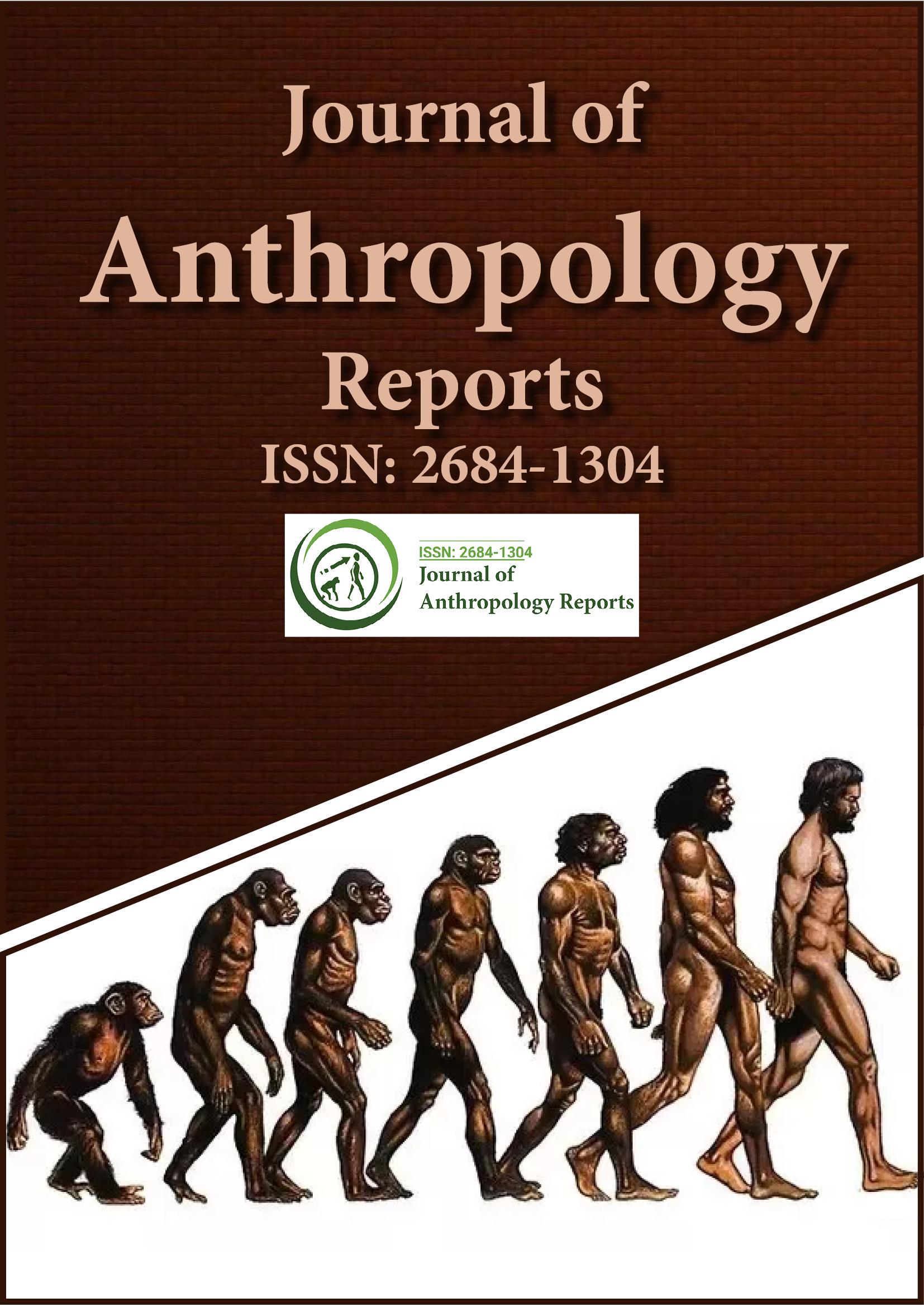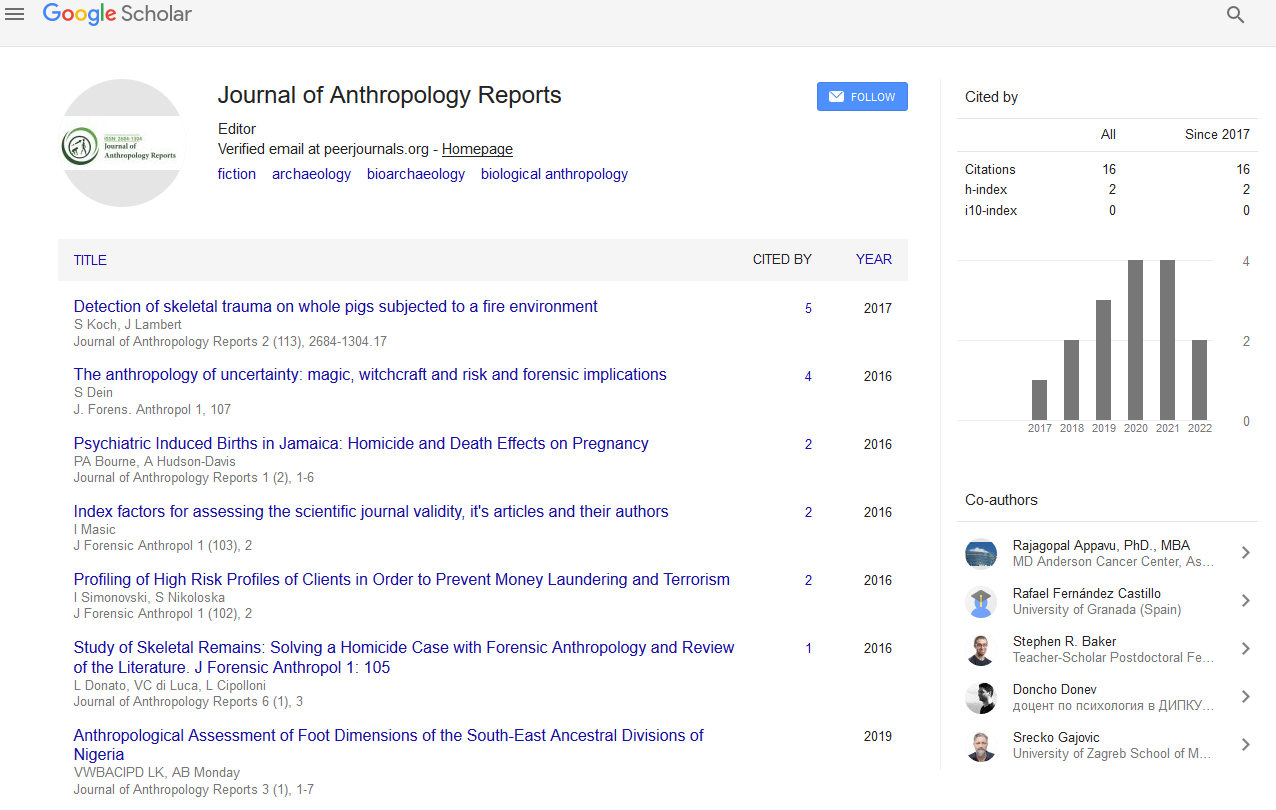Indexed In
- RefSeek
- Hamdard University
- EBSCO A-Z
Useful Links
Share This Page
Journal Flyer

Open Access Journals
- Agri and Aquaculture
- Biochemistry
- Bioinformatics & Systems Biology
- Business & Management
- Chemistry
- Clinical Sciences
- Engineering
- Food & Nutrition
- General Science
- Genetics & Molecular Biology
- Immunology & Microbiology
- Medical Sciences
- Neuroscience & Psychology
- Nursing & Health Care
- Pharmaceutical Sciences
Commentary Article - (2024) Volume 7, Issue 2
Medico-Legal Investigation of Remains Recovered at Sea
Haruto Tanaka*Received: 27-May-2024, Manuscript No. JFA-24-26529; Editor assigned: 30-May-2024, Pre QC No. JFA-24-26529 (PQ); Reviewed: 13-Jun-2024, QC No. JFA-24-26529 (QC); Revised: 20-Jun-2024, Manuscript No. JFA-24-26529 (R); Published: 27-Jun-2024, DOI: 10.35248/2684-1304.24.7.194
Description
Scientific anthropological examinations frequently experience cases that are challenging to decipher, particularly while managing skeletal remaining parts tracked down in a marine setting. Deciding the drenching time in the ocean of skeletal remaining parts is quite difficult for measurable examinations and noting this would resolve many cases in the short time period. The physical and synthetic properties of bones change during their time in water and these progressions cause challenges and postpones in recognizing and remaking the organic profile of an obscure subject. Generally speaking, human remaining parts found adrift are exposed to medico-legitimate and anthropological examinations. The ocean is a frequently new legal setting because of the limitless factors that compromise recognizable proof examinations. Internationally, suffocating is the third driving reason for death from accidental injury and records for 7% of all injury passing’s overall. To this rate, one must then add passing’s, likewise in a marine setting, brought about by cataclysmic events, transport mishaps, deliberate passing’s coming about because of self-destruction and crime and, albeit uncommon, passing’s brought about by the ravaging of sharks or other marine creatures.
Taphonomy, in a marine setting, is a point examined by numerous scientists, not just in light of the fact that the distinctions among marine and earthbound taphonomy are hard to miss, yet in addition on the grounds that the factors of the marine setting prompt a decay that, until now, has no unmistakable stages helpful to make an order. The debasement of bone tissue in a marine setting is brought about by factors of a prevalently ecological nature, essentially the time and method of home in the water, trailed by the statement of trash on the outer layer of the bone, the progression of the marine ebb and flow, saltiness, pH, temperature, profundity, surface science in touch with the example, greenery.
These factors during the disintegration stages cause various kinds of debasement that outcome, in most legal disputes, in restrictions in distinguishing proof and in the significant time in resolving the case. to go through anthropological and medicolawful examinations and to remake the organic profile of the unidentified subject. Prior to doing the outer assessment, the carcass was delicately washed under low tension, to eliminate the overabundance of sandy substrate covering the bone portions, as well as the deposits of muscles and epidermis, that were in a high level condition of deterioration and in a pre-adipoceration stage.
The dissection examinations completed on the accessible skeleton were restricted by the ex-risk loss of delicate tissue because of the spoliative activity of the marine miniature and large scale fauna. The remaining delicate tissue was impacted by starting adipocerisation. Adipocerisation is a specific groundbreaking peculiarity that happens in corpses because of drawn out home in water or especially damp soils and is portrayed by the development of free and in-dissolvable unsaturated fats by posthumous hydrogenation and hydrolysis of fat tissues. It gives the remaining parts a vile, greasy, cretaceous appearance and a dark earthy colored tone. It is accepted to begin quickly when in water or a sticky climate. Be that as it may, for the impacts to become noticeable, it requires an adequately lengthy investment, at least one month. Then again, for complete adipocerisation of a body, a base home of 3-6 months in a great climate is required.
The deterioration of human delicate tissue in water happens at a slower rate than disintegration outside a marine setting and there are clear contrasts in taphonomy among new and salt water. In a marine setting, in salt water, deterioration has a sped up process on the off chance that the temperature is high, like in summer. Then again, on the off chance that the temperature is extremely low, as in winter, the decay cycle that hence prompts disarticulation is fairly slow.
Citation: Tanaka H (2024) Medico-Legal Investigation of Remains Recovered at Sea. J Anthropol Rep. 7:194.
Copyright: ©2024 Tanaka H. This is an open-access article distributed under the terms of the Creative Commons Attribution License, which permits unrestricted use, distribution, and reproduction in any medium, provided the original author and source are credited.

